WHAT IS ‘SERVICE DESIGN’? LET’S DIVE DEEP INTO THE INTERESTING SUBJECTS OF SERVICE DESIGN DURING THE EVENT BY MQDC AND MORE THAT WAS HELD ON FEBRUARY 3 AT TRUE DIGITAL PARK
TEXT: PRATCHAYAPOL LERTWICHA
PHOTO: PHUBETH THARATHRONCHANAKUL
(For Thai, press here)
Setting up and running a shop that sells design-oriented products, especially a successful one, requires not only genuinely appealing products but also a storefront with a charming ambiance. But even if everything is immaculately executed and all the necessary boxes are checked, a complicated shopping experience or subpar service from the staff can lead to the eventual loss of returning customers and failure to attract new ones.
Service design is the art and science of crafting seamless and efficient services and experiences. It has emerged as a dynamic discipline and has become an increasingly interesting field of design, evolving beyond the sole focus on customer experiences to encompass all stakeholders. This includes those on the front lines who provide services and interact directly with customers, as well as those working behind the scenes in back-of-the-house operations. Rooted in the principles of human-centered design, service design seeks a genuine comprehension of each person’s unique needs.
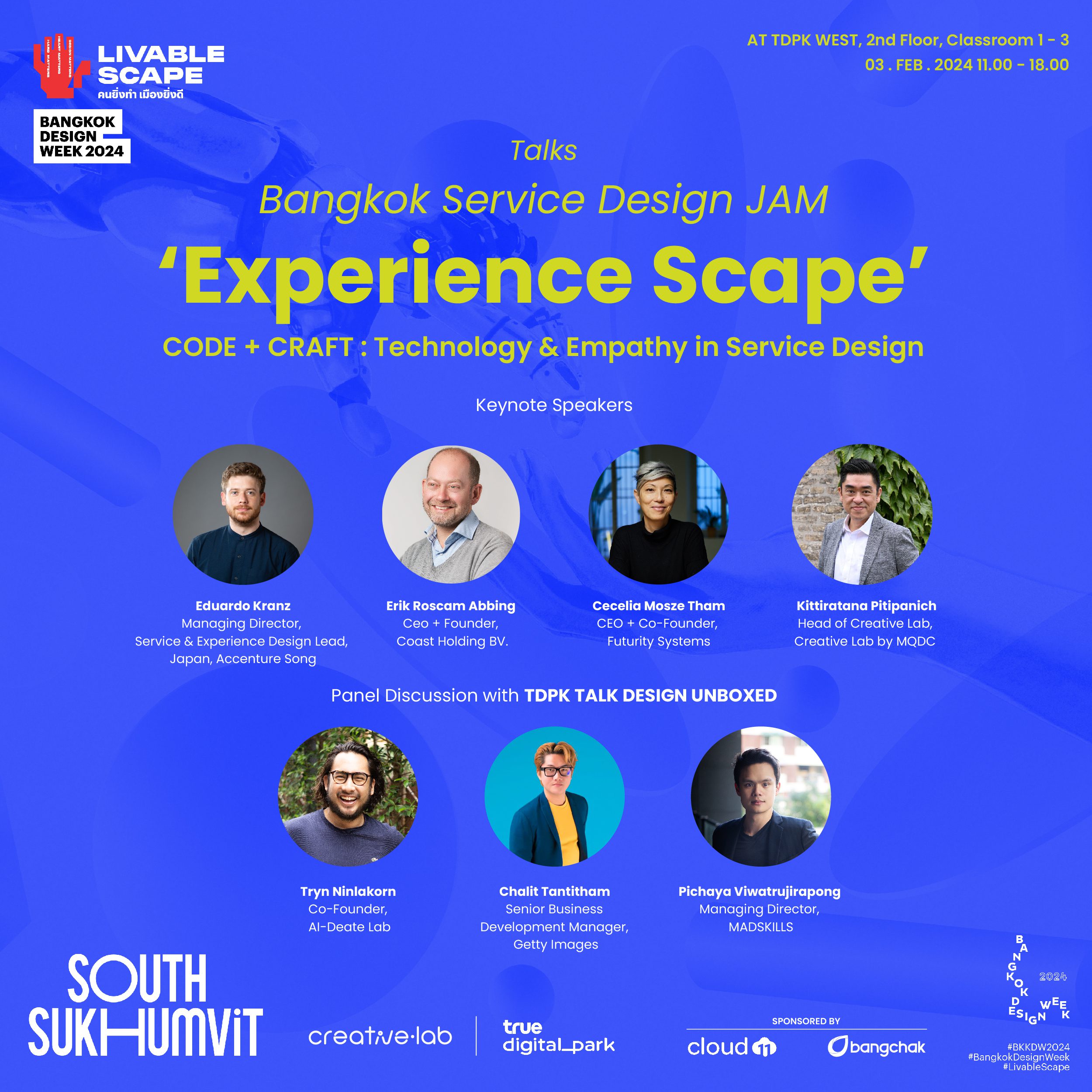
On February 3rd, Creative Lab by MQDC organized an event, EXPERIENCE SCAPE: CODE + CRAFT: Blending Technology & Empathy in Service Design, at True Digital Park, bringing together leading experts in experience design from Thailand and beyond. The event had the specific aim of deepening the public’s understanding of service design. The special focus is on how service design has developed in this day and age, and as anticipated, artificial intelligence (AI), the hottest topic at the moment, received a special mention.
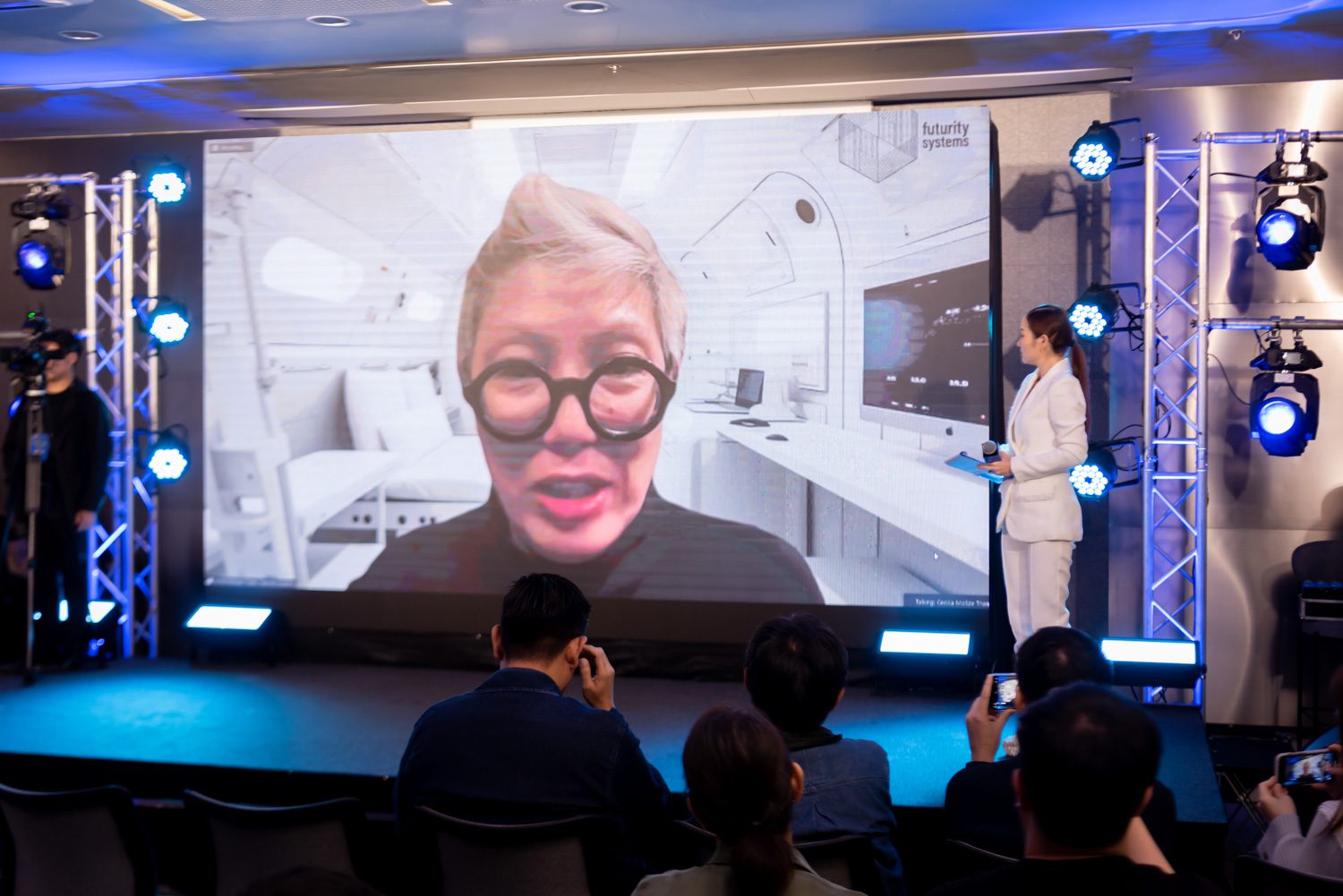
Cecilia MoSze Tham, CEO of Futurity Systems
The first speaker who took the stage in the first session titled ‘Futures-as-a-Service: Designing Intentional Futures through Science, Technology, and Business in Service Design,’ was Cecilia MosZe, the CEO of Futurity Systems, a research, design, and innovation consultancy.
Cecilia envisions a future where economic exchanges may no longer be confined to interactions solely between humans or companies. Instead, they could unfold between humans and AI or even between different AIs. For instance, a home food-receiving device could relay information to a self-driving delivery vehicle, informing it of any food needed within a household. Subsequently, the vehicle would autonomously deliver the ordered items, managing the entire process, including payment collection, eliminating the need for human intervention entirely.
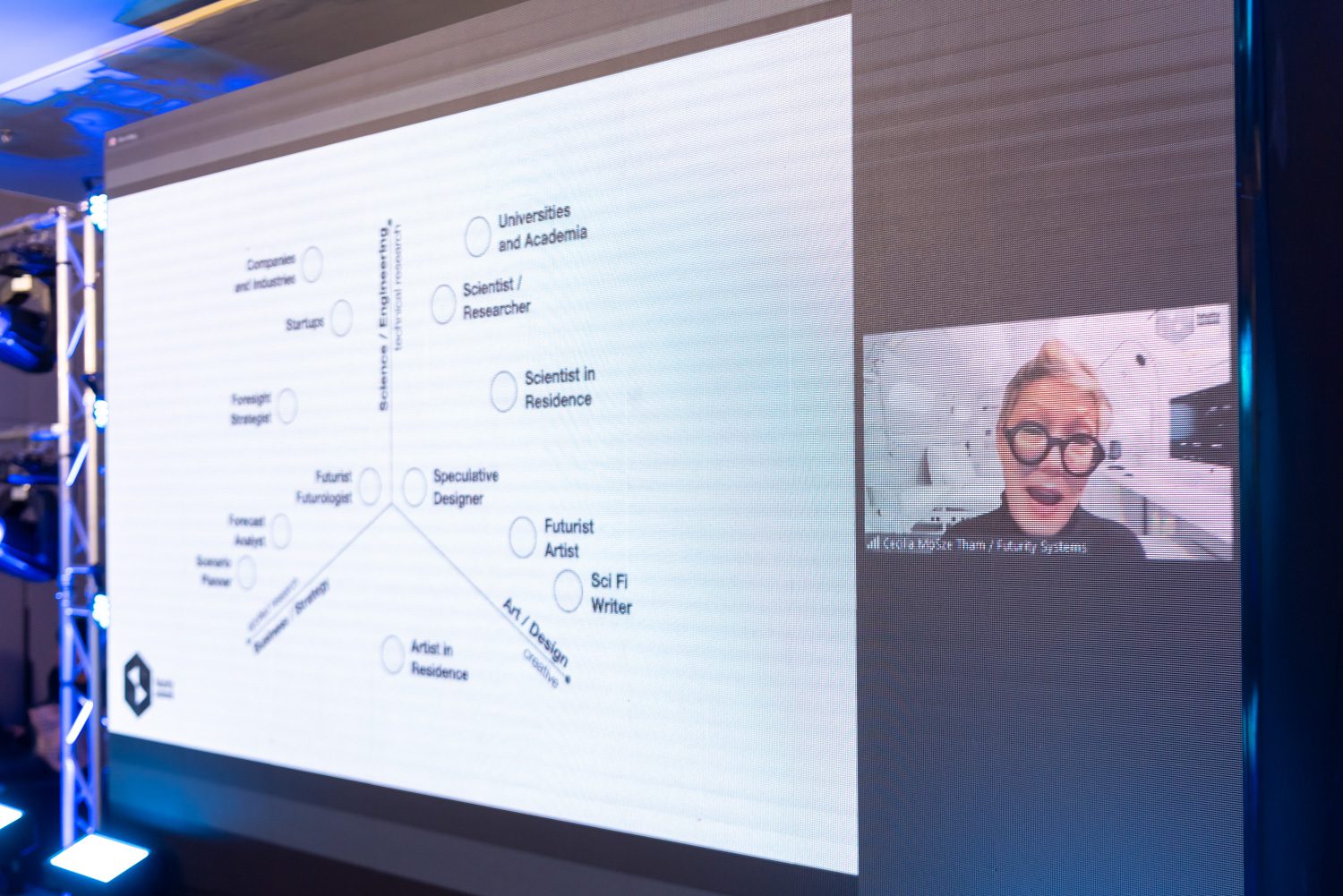
But these are not the only anticipated possibilities. In the future, plant species might have the ability to manage their own lives. The current approach of humans allocating and sharing global resources based on self-interest has proven to be a fundamentally flawed method. While issues like food waste persist, there are still people suffering from hunger, and environmental problems continue to escalate.
Cecilia then introduces an intriguing idea that made the audience’s eyes sparkle with excitement: to give actual life to real plant species. The idea and process involve collecting biochemical data from plants and utilizing AI technology to bring plants to life as sentient beings capable of making decisions on their own. Living plants could open bank accounts, allowing people to pay them in exchange for harvesting fruits. Alternatively, plant species might collaborate to invest in start-ups specializing in water management in case the land turns arid. It all sounds out of this world and implausible, but who knows? These scenarios could very well become a reality in the future.
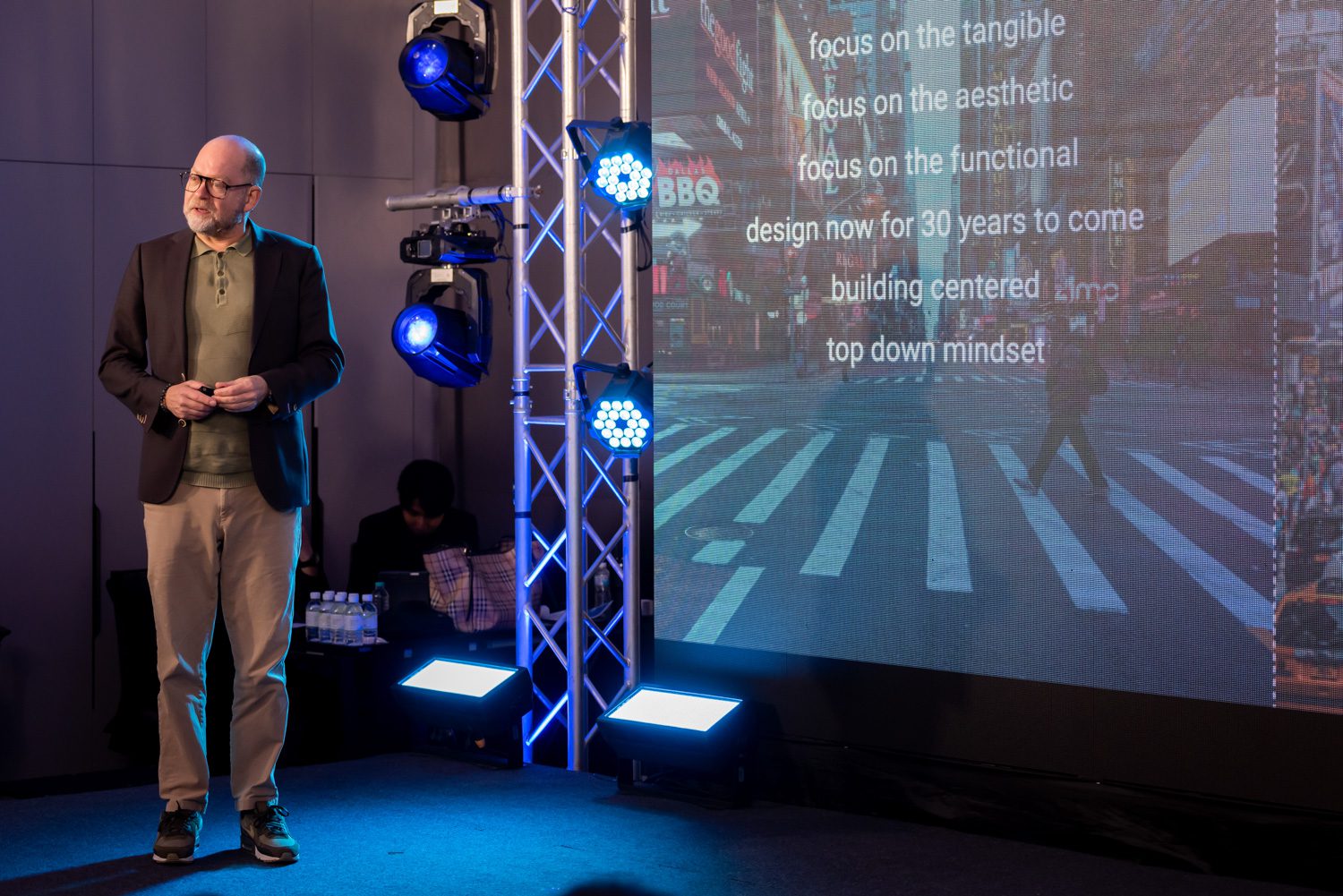
Erik Roscam Abbing, Co-founder and CEO of Coast Holding BV
While many see service design within the context of business, Erik Roscam Abbing, the founder and CEO of Coast Holding BV, a consulting company specializing in service design, suggests that we can also apply the discipline on a larger scale. In the talk titled ‘Urban Service Design: Designing Cities as Sustainable Ecosystems,’ he explores the idea of integrating service design at the urban level.
One often perceives a city as an area with defined boundaries, comprising buildings, streets, rivers, cars, and people—tangible structures or objects. However, in reality, human experiences and emotions are also crucial components of a city, just as much as its physical elements. A good city is not merely one with a beautiful environment; it is a city that creates vibrant and diverse life experiences for its inhabitants. For Erik Roscam, a city is not just a ‘product’ but a ‘service.’

Designing an urban experience involves various stakeholders. The food trade alone entails a vast network of people, from merchants and delivery drivers of services such as Grab to customers, markets, government officials, and individuals working in the legal field. In the talk, Erik provides examples of his work that leverage service design principles to enhance the quality of urban life. For instance, he looks into alternative means of transportation in a future where cars become outdated, how to ensure city dwellers have access to nutritious food, or how to create enjoyable experiences using boats for transportation in Bangkok. These projects are ongoing endeavors for him and his firm, and it’s exciting to see how they will develop.
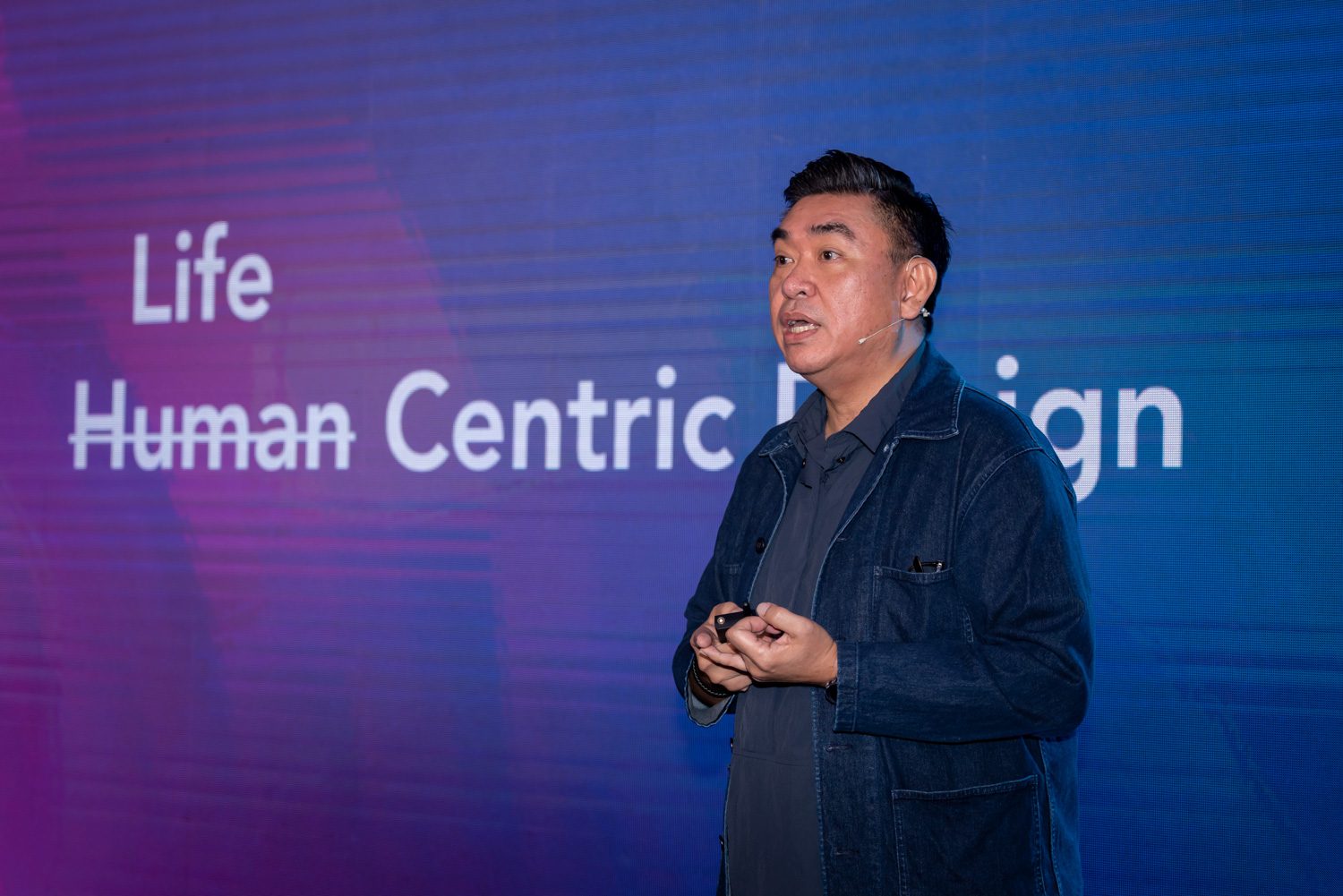
Kittiratana Pitipanich, Head of Creative Lab by MQDC
In Thailand’s business sector, MQDC stands out among those who have embraced service design principles to elevate their products and services. Kittiratana Pitipanich, the Head of Creative Lab at MQDC, shared his experiences on integrating service design into real design projects in the talk titled ‘Mastering Service Design: Crafting Memorable Experiences.’

MQDC’s project, The Forestias, garnered remarkable attention upon its launch, for how it’s intentionally designed to allocate nearly half of its area to lush, communal green spaces. Adding to the appeal is the collaboration with Foster + Partners, a leading global architectural firm recruited to help with the project’s design.
The project’s distinctiveness goes beyond aesthetics. Kittiratana emphasized how the service design process has been instrumental in shaping services aimed at fostering happiness for both customers and service providers. Notably, the project transcends a human-centric focus, considering the coexistence of various living creatures. For instance, beneath the project’s streets, passages are designed for animals of all species to traverse without disturbing humans, and vice versa. “Humans exist in an increasingly complex world, and humans cannot survive in complete isolation,” Kittiratana ended his talk with a compelling conclusion.

Eduardo Kranz, Managing Director of Service & Experience Design Lead
The final session, ‘Innovate to Elevate: Rethinking Business Strategies through Design,’ was eagerly awaited by many. It featured Eduardo Kranz, Managing Director and Service & Experience Design Lead at Accenture Song in Japan.
Eduardo highlighted the heightening complexity of people’s identities and the evolving, unpredictable nature of consumer choices. Consumers seamlessly transition from one brand they have been using consistently to another, forcing businesses to adapt. Design thinking becomes a key tool to comprehend people’s lifestyles and genuine identities.
To illustrate his concepts, Eduardo shared compelling case studies. One particularly worth mentioning is a project with Shiseido in Japan.
Instead of relying on models for a luxurious brand image, Eduardo engaged in conversations with Japanese women. Through this exploration, an important insight was discovered, revealing a common issue among these women: a lack of self-confidence.

Crafting brand experiences spans from the app to the storefront, emphasizing the importance of boosting confidence and encouraging women to never stop feeling beautiful. The approach includes features such as the app’s makeup recommendations to help users become the desired and improved versions of themselves, rewarding customers with more than just promotional discounts, and providing exceptional in-store experiences with personal assistants. It’s about creating lasting brand values and connections that brands wish people to remember, transcending mere profit making to foster an emotional bond that captivates people and makes them fall in love with the brand in the long run.
In addition to the densely packed lecture sessions, there was also a panel discussion titled ‘Design Possibilities: Power of AI in Action,’ where experts exchanged ideas on the role of AI in design. The panel included Tryn Ninlakorn, the co-founder of AI-Deate Lab; Chalit Tantitham, Senior Business Development Manager at Getty Images; and Pichaya Viwatrujirapong from MADSKILLS.
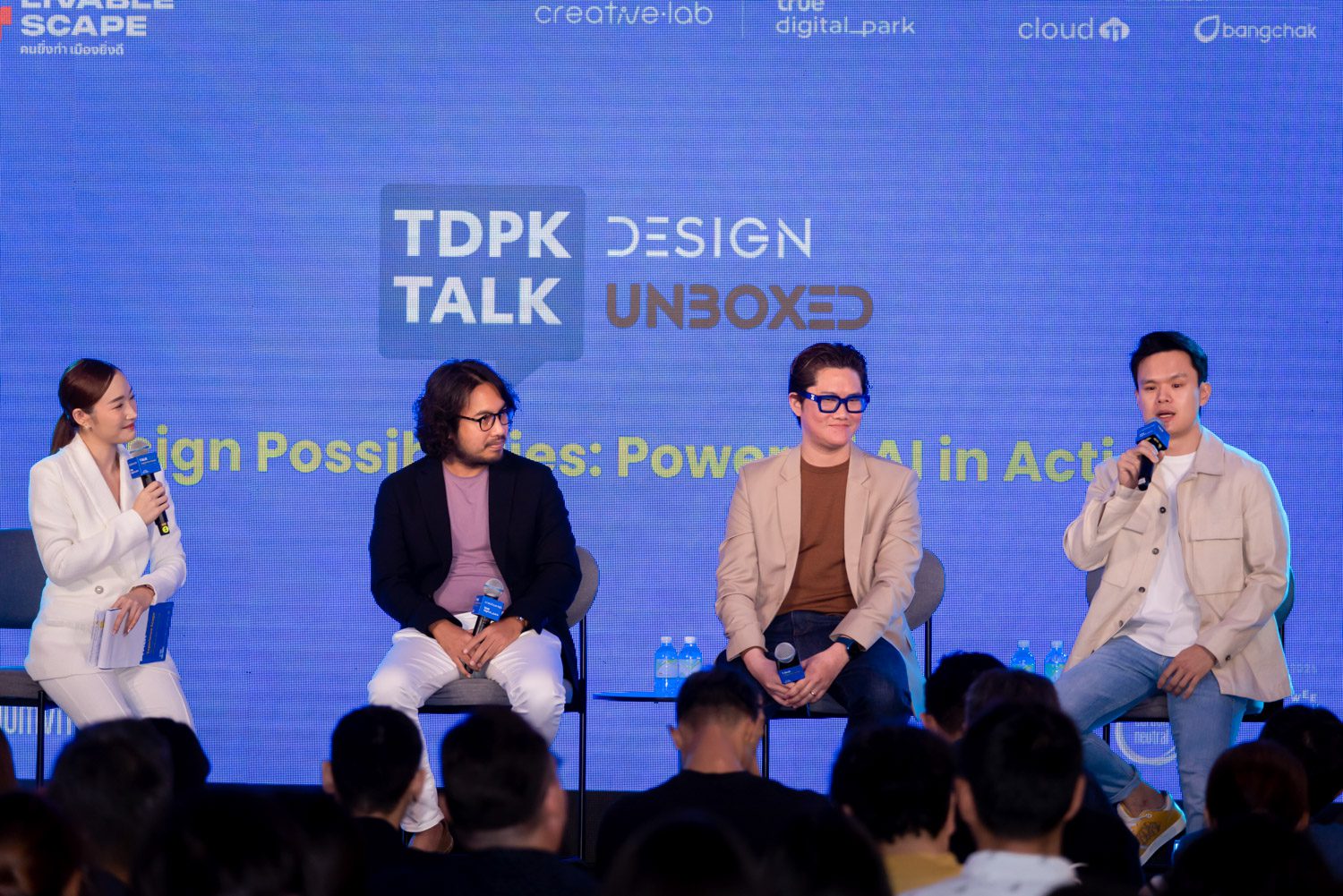
(Left to right) Tryn Ninlakorn, the Co-founder of AI-Deate Lab; Chalit Tantitham, Senior Business Development Manager from Getty Images; Pichaya Viwatrujirapong from MADSKILLS
Everyone seems to agree that AI speeds up work, reduces costs, and streamlines the complexity and repetitiveness of tasks. However, the use of creative AI tools comes with its own set of challenges. If a new work closely mimics the style of an artist, does it tarnish the artist’s reputation? How does one address copyright issues when AI generates new works by imitating existing art, especially without the artist’s approval, leading many brands to strictly prohibit the use of AI, among other measures?
Various solutions have been proposed, such as clearly disclosing information about the source of artistic works created by AI or compensating the owners of the images used to generate AI-driven artworks. Currently, there is no foolproof formula for navigating the future coexistence of AI in the creative realm. Having said that, it is pretty certain that we cannot outright reject or avoid AI, as this tool is poised to become an integral part of our future.
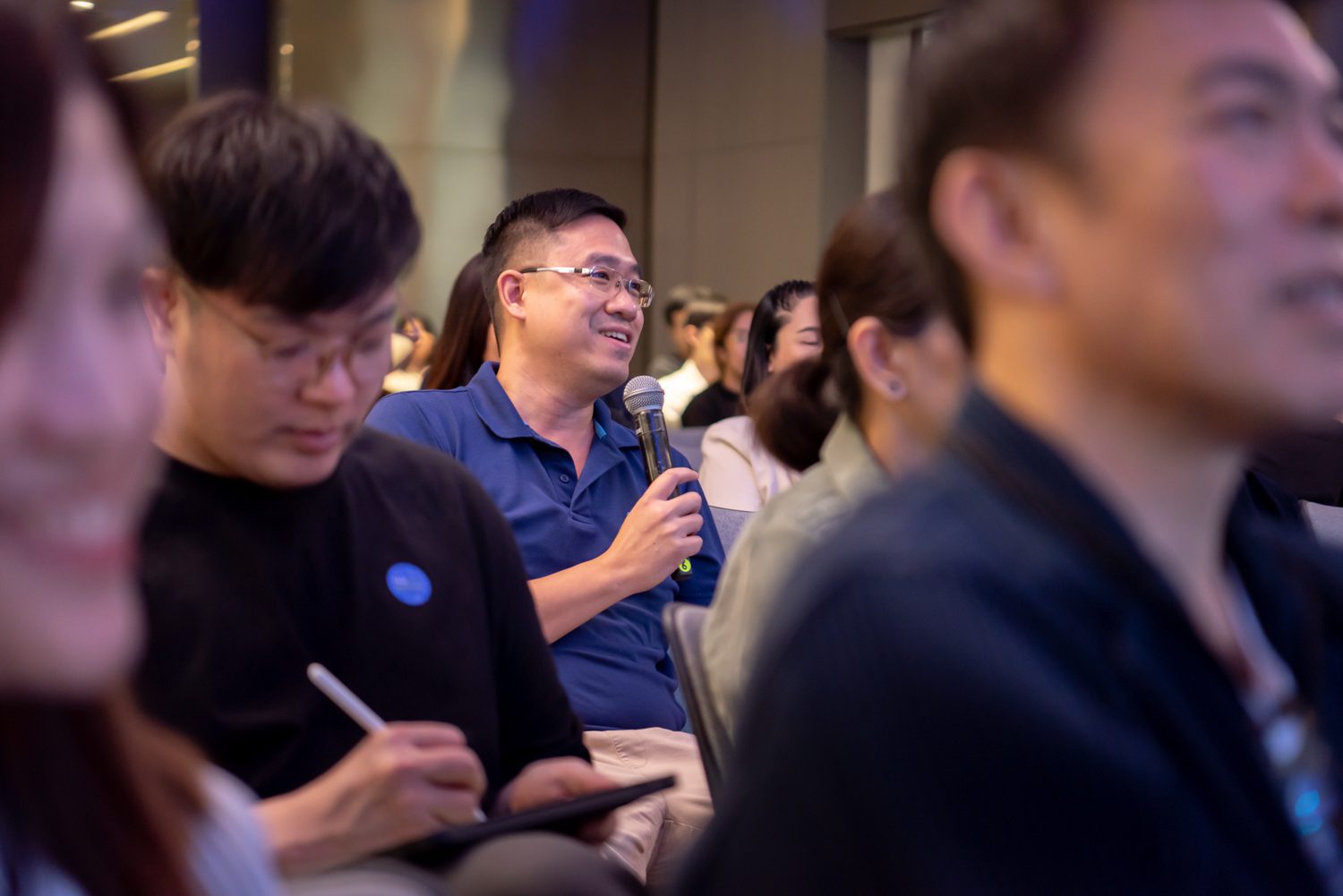
Undoubtedly, the day the event took place has opened up discussions on new perspectives and unforeseen aspects of design. Creative Lab by MQDC also organized hands-on activities for participants to engage in the actual service design process on the day following the lecture. So, stay tuned for the next update on the second-day of activities on art4d.

